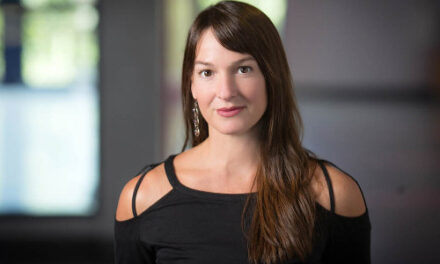We live in a remarkable region where new music is routinely forged – by Americans! – and performed – by our own citizens – alongside classic works from previous generations. It’s not all that unusual, here, for composers to play their own music or to speak before readings thereof. But the fact that the making of music in the US is largely a business, for want of a better word, means that market considerations often come into play, driving programming and advertising and all the other trappings of the commercial world. It is therefore always refreshing to find concerts that are not market-driven, events where it is apparent that art is the primary focus, as opposed to the increasingly noxious practice of putting butts in seats regardless of the potential short- or long-term costs….
In NCSU’s Stewart Theatre on the afternoon of April 24, the Raleigh Civic Chamber Orchestra, one of two orchestras sponsored by the Raleigh Civic Symphony Association, offered the second of two all-American afternoons, in the process bringing to a close a remarkable mini-series dubbed “American Originals.” This installment of the mini-series, created and directed by Randolph Foy, encompassed works by three living, breathing composers, one of whom was present to speak and hear his music. Foy addresses the lamentably small audience, too, augmenting in words the outstanding program notes he also contributed.
The opening work was Charles Tomlinson Griffes’ ground-breaking little tone poem, “The White Peacock.” Begging our readers’ indulgence, I must say that I have known this quasi-Debussyesque piece since childhood, thanks to a – are you ready for this? – 7″ blue-label Columbia Lp (yes!), recorded by what was then called the Philharmonic-Symphony Orchestra of New York, conducted by Stokowski. (Folks who doubt the veracity of this can look it up: it bears catalog number 3-117.) I mention this in part because I’ve never heard it played live and in part because, despite having known it for so long, I had never realized how important the music is. Before talking about his own score, composer J. Mark Scearce, Director of Music at NCSU, spoke reverentially of the Griffes, calling it “seminal” and explaining that it is probably the first truly American composition. Yes, there are French influences, but its strength is in its economical scoring and its remarkable power. Foy noted that Griffes studied with Humperdinck, whom many of us view as a member of the Wagnerian camp, but the “Peacock” orchestration is demonstrably American and, Scearce explained during the intermission, it contributed to what we now recognize as our concert music – music that has strong rhythms or projects expansive moods (or both) and is often influenced by sounds from the diverse cultures that have been cooked up here in our proverbial melting pot.
The performance was the finest yet heard from the RCCO, thanks to exceptional winds and horns and brass and rock-solid string playing. The band included harp, piano, and celeste, but the richly-colored music is gentle, and serenity reigned in the hall.
Scearce’s own piece, “Endymion’s Sleep” (1996), is for strings alone, and the introduction seemed a bit shaky and hesitant to these ears, but soon enough the players found the groove. It is a memorial work, and it may be the composer’s most performed and best-known score, thanks to a still-in-print Nashville Chamber Orchestra recording and its reappearance as the slow movement of a string quartet recently recorded by the Fry Street Quartet, formerly in residence in Hickory. Barber’s Adagio, which began as a quartet movement before being played by the strings of the NBC SO and countless other ensembles, reversed the process. The Barber and the Scearce are powerful and profoundly moving elegies, and there’s much to be said for both of their incarnations, small and large. It was wonderful to hear “Endymion’s Sleep” again, and it fit supremely well with the Griffes, which preceded it.
There was a big change of pace and force in Stephen Hartke’s “Pacific Rim” (1988), which is big, splashy, influenced by musics of Asia, and clearly tricky to perform. The bit of “ethnomusicological fiction” (to use the composer’s term, quoted by Foy) involves lots of percussion, busily realized by virtuoso Cameron Britt, and lots of other contrasts, but at first hearing, it seemed a tad disjointed. Perhaps it was just too different from the opening works – or perhaps it would have fared better after an intermission.
The finale was John Harbison’s “The Most Often Used Chords” (1992), which turns up again next month, when the Carolina Chamber Symphony plays it in Winston-Salem. It’s a remarkable score, in four fairly concise movements, that at once tweaks the art of composition (by poking fun at chords, scales, and other music building-blocks) and celebrates it, albeit with more than a few notes of cynicism. Musicologists and experienced players find it fascinating and, here and there, amusing, but it works well enough for the uninitiated (which is not to say “the unwashed”), and the performance had a lot going for it.
To come back to where we began…, this was a remarkable afternoon devoted to all-American, all-20th-century music, with three-quarters of the pieces composed within the past 17 years. There was a sense of purpose and unity in the program itself, and the playing was generally outstanding. It was a beautiful day…, and there was even more competition for the attention of area music lovers than usual. But those who were there – in the audience and, based on a few post-concert conversations, on the stage, too – know how special the occasion was. Here’s a vote for more of the same from Foy and company next season and in the years to come!











